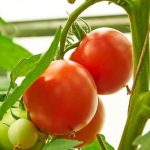Arizona summer vegetable gardening offers a unique set of challenges and opportunities for gardeners in the hot, arid climate of Arizona. With the right knowledge and preparation, it is possible to grow a diverse array of vegetables even in the midst of the scorching summer heat. In this article, we will explore what makes Arizona unique for vegetable gardening and the benefits of growing vegetables during the summer months in this state.
The extreme temperatures and dry conditions in Arizona pose a challenge for most plants, but with careful planning and attention to specific needs, it is possible to have a successful vegetable garden even in the peak of summer. By understanding the climate and selecting appropriate vegetables, Arizona gardeners can enjoy fresh produce throughout the hottest months.
One of the key benefits of growing vegetables in an Arizona summer is that many heat-loving plants thrive in these conditions. With proper care and attention, gardeners can take advantage of an extended growing season and enjoy bountiful harvests during a time when other regions may struggle to produce. In this article, we will delve into tips for selecting the right vegetables for an Arizona summer garden and how to ensure their health and productivity despite the intense heat.
Best Summer Vegetables for Arizona
Growing vegetables in the Arizona summer can be a challenge due to the hot and dry climate, but there are still plenty of options for successful gardening. Some of the best summer vegetables to grow in Arizona include tomatoes, peppers, cucumbers, squash, and melons.
These plants are well-adapted to the high temperatures and can thrive in the intense heat of an Arizona summer. When selecting vegetables for your garden, it’s essential to choose varieties that are specifically bred for hot weather conditions, as they will have a better chance of success.
One of the key tips for selecting the right vegetables for your Arizona summer garden is to look for heat-tolerant varieties. Many seed companies offer specific cultivars that are bred to withstand high temperatures and arid conditions. For example, heat-tolerant tomato varieties like “Phoenix” or “Sunmaster” are excellent choices for Arizona gardens. Similarly, opting for heat-tolerant pepper varieties such as “Anaheim”, “Jalapeno” or “Serrano” can result in a bountiful harvest despite the scorching temperatures.
Moreover, it’s important to consider water requirements when choosing summer vegetables for your Arizona garden. Selecting drought-resistant plants like zucchini or watermelon can help conserve water while still producing a plentiful harvest.
Additionally, incorporating mulch into your garden beds can help retain soil moisture and reduce evaporation, which is especially crucial in an arid climate like Arizona’s. By carefully selecting your vegetable varieties based on their ability to endure extreme heat and dryness, you can set yourself up for a successful Arizona summer vegetable gardening season.
| Vegetable | Heat Tolerance Level |
|---|---|
| Tomatoes (Phoenix variety) | High |
| Cucumbers | Moderate |
| Peppers (Anaheim variety) | High |
| Squash (Zucchini variety) | High |
Tips for Starting a Summer Vegetable Garden in Arizona
Starting a summer vegetable garden in Arizona can be a rewarding and enjoyable experience, but it also comes with its own set of challenges. The intense heat and arid climate make it important for gardeners to take specific steps to ensure the success of their crops. Here are some essential tips for starting a summer vegetable garden in Arizona:
- Preparing the soil for the summer season: Arizona’s soil is often sandy and lacking in organic matter, so it’s important to amend the soil with compost and other organic materials to improve its texture and fertility.
- Choosing the right location for your garden: Select a spot that receives adequate sunlight but also offers some protection from the scorching afternoon sun. Consider using shade cloth or planting near taller plants that can provide some relief from the heat.
- Proper watering and care for summer vegetables: In Arizona, it’s crucial to water your vegetable garden consistently, especially during the hottest months. Consider installing a drip irrigation system or soaker hoses to ensure that your plants receive enough moisture without excessive evaporation.
In addition to these tips, selecting the right vegetables is also key to successful summer gardening in Arizona. It’s important to choose heat-tolerant varieties that can thrive in high temperatures. Some great options for Arizona summer vegetable gardening include:
- Tomatoes
- Peppers
- Eggplant
- Squash
- Cucumbers
- Okra
These vegetables are known for their ability to withstand the heat and produce bountiful harvests even in challenging conditions. By following these tips and choosing suitable vegetables, you can kick-start your summer vegetable garden in Arizona and look forward to enjoying fresh, homegrown produce throughout the season.
Dealing With Arizona Summer Heat
Arizona summers are notoriously hot, making it a challenge to maintain a thriving vegetable garden. With temperatures often exceeding 100°F, it’s essential to employ strategies for protecting plants from intense heat and ensuring they receive adequate water. One solution is to use shade options for delicate vegetables, such as installing shade cloth or creating temporary structures to provide relief from the scorching sun.
In addition to providing shade, proper watering is crucial for the success of a summer vegetable garden in Arizona. Drip irrigation systems can help ensure that plants receive consistent moisture without wasting water through evaporation. Mulching around the base of plants can also help retain soil moisture and regulate temperature.
It’s important for gardeners in Arizona to be mindful of signs of heat stress in their plants, including wilting, yellowing leaves, and stunted growth. By taking proactive measures such as providing shade, proper watering, and monitoring for heat-related issues, gardeners can help their summer vegetables thrive despite the challenging climate.
| Topic | Data |
|---|---|
| Shade Options | Install shade cloth or create temporary structures |
| Watering Strategies | Use drip irrigation systems and apply mulch to retain soil moisture |
| Heat Stress Recognition | Keep an eye out for wilting, yellowing leaves, and stunted growth |
Pest and Disease Management for Arizona Summer Vegetable Gardens
When it comes to Arizona summer vegetable gardening, one of the biggest challenges that gardeners face is managing pests and diseases in the hot climate. With the intense heat and dry conditions, certain pests and diseases can thrive, posing a threat to your summer vegetable garden. However, with the right knowledge and strategies, you can effectively manage these issues and ensure a healthy and bountiful harvest.
To effectively manage pests and diseases in your Arizona summer vegetable garden, consider the following tips:
- Identify common pests and diseases in Arizona: Familiarize yourself with the specific pests and diseases that are prevalent in Arizona during the summer months. Common issues include spider mites, aphids, whiteflies, powdery mildew, and blossom end rot.
- Implement natural pest control methods: Consider using natural pest control methods such as introducing beneficial insects like ladybugs or lacewings to combat pest infestations. Additionally, practicing crop rotation and intercropping can help prevent the spread of diseases.
- Regularly monitor your plants: Keep a close eye on your vegetable plants for any signs of pest or disease infestation. Early detection is key to preventing issues from escalating and causing widespread damage to your garden.
By staying proactive and implementing effective pest and disease management strategies, you can protect your Arizona summer vegetable garden from potential threats and ensure a successful growing season.
Remember that prevention is always better than cure when it comes to managing pests and diseases in your summer garden. By taking proactive measures, you can minimize the risk of issues arising and enjoy a thriving vegetable garden throughout the hot Arizona summer months.
Maximizing Space and Efficiency in Arizona Summer Vegetable Gardens
Utilizing Vertical Gardening
Arizona summer vegetable gardening often requires creative solutions for limited space. One effective method is vertical gardening, which involves growing plants upwards instead of outwards. This can be achieved using trellises, hanging baskets, or specialized vertical planters. By taking advantage of vertical space, gardeners in Arizona can maximize their yield and grow a variety of vegetables without needing a large plot of land.
Companion Planting
Another way to increase efficiency in an Arizona summer vegetable garden is through companion planting. This practice involves planting different types of vegetables together that benefit each other in some way, such as deterring pests or improving soil quality. For example, planting marigolds alongside tomatoes can help repel nematodes and other harmful insects. By carefully planning which plants to put next to each other, gardeners in Arizona can achieve higher yields and healthier crops.
Small or Urban Gardens
For those with limited space, such as small urban gardens, maximizing efficiency becomes even more crucial. Raised beds and container gardening are popular options for small-scale vegetable gardening in Arizona. These methods allow for better control over soil quality and drainage while making the most of the available space. Additionally, utilizing compact varieties of vegetables and herbs can help ensure a bountiful harvest without overcrowding the garden.
By implementing these strategies, Arizona residents can make the most of their summer vegetable gardens regardless of space limitations. Whether it’s through vertical gardening, companion planting, or making the most of small urban spaces, there are numerous ways to enhance efficiency and productivity when growing vegetables in Arizona’s hot summer climate.
Harvesting and Preserving Summer Vegetables in Arizona
Arizona’s scorching summer temperatures can make vegetable gardening a bit challenging, but with the right knowledge and techniques, gardeners can still enjoy a bountiful harvest. When it comes to harvesting and preserving summer vegetables in Arizona, timing is crucial. Knowing when to pick your vegetables at their peak ripeness is essential for the best flavor and texture.
Timely Harvesting
In the intense heat of an Arizona summer, vegetables can mature quickly. It’s important to check your garden regularly for ripe produce. Vegetables like tomatoes, cucumbers, and zucchini should be harvested as soon as they reach maturity to prevent them from becoming overripe or drying out in the high temperatures.
Proper Storage and Preservation
Once you’ve harvested your summer bounty, proper storage and preservation methods are vital for prolonging the enjoyment of your harvest. Tomatoes and peppers can be canned or turned into delicious sauces for long-term storage, while herbs can be dried and stored in airtight containers. Cucumbers can be pickled to enjoy throughout the year.
Creative Use of Produce
With an abundance of fresh summer vegetables at your disposal, get creative with how you utilize them in your cooking. Fresh salads, salsas, and grilled veggie kabobs are perfect summer dishes that make the most of your harvest. You could also consider experimenting with new recipes or preserving methods such as fermentation or making homemade jams and preserves. Ultimately, enjoying the fruits of your labor is one of the most rewarding aspects of Arizona summer vegetable gardening.
Community Resources and Events for Arizona Summer Vegetable Gardeners
In conclusion, Arizona summer vegetable gardening offers a unique and rewarding experience for gardeners who are willing to take on the challenges of the hot climate. With the right selection of vegetables and proper care, it is possible to have a successful and abundant harvest even in the sweltering summer months.
From preparing the soil to dealing with pests and diseases, Arizona gardeners have access to a wealth of resources and events that can help them make the most of their summer vegetable gardens.
Local gardening clubs and organizations play a crucial role in bringing together like-minded individuals who are passionate about gardening in Arizona’s unique climate. These groups often provide valuable information, support, and opportunities to connect with experienced gardeners who can offer advice and guidance. Additionally, farmer’s markets and community garden programs offer access to locally grown produce as well as opportunities to learn from other growers in the community.
For those looking to expand their knowledge and skills in Arizona summer vegetable gardening, workshops and events specifically geared toward this topic can be incredibly beneficial. These events often cover a range of topics such as maximizing space, pest management, and preserving your harvest. By taking advantage of these resources, Arizona gardeners can continue to improve their techniques and enjoy bountiful yields of fresh, homegrown produce throughout the summer months.
Frequently Asked Questions
What Vegetables Grow in Arizona in Summer?
In the hot Arizona summer, certain vegetables thrive in the heat. Common vegetables to grow include tomatoes, peppers, cucumbers, squash, and melons. These warm-season crops do well in Arizona’s high temperatures.
When Should I Start a Vegetable Garden in Arizona?
It is best to start a vegetable garden in Arizona in late winter or early spring. This timing allows the vegetables to establish themselves before the intense summer heat arrives. By starting early, you can take advantage of the milder weather for planting and growing.
What Is the Easiest Vegetable to Grow in Arizona?
The easiest vegetable to grow in Arizona is likely the tomato. Tomatoes thrive in the hot climate and are relatively low-maintenance. With proper watering and sunlight, they can produce an abundance of fruit throughout the summer months.

If you’re looking to get into vegetable gardening, or are just looking for some tips on how to make your current garden better, then you’ve come to the right place! My name is Ethel and I have been gardening for years. In this blog, I’m going to share with you some of my best tips on how to create a successful vegetable garden.





